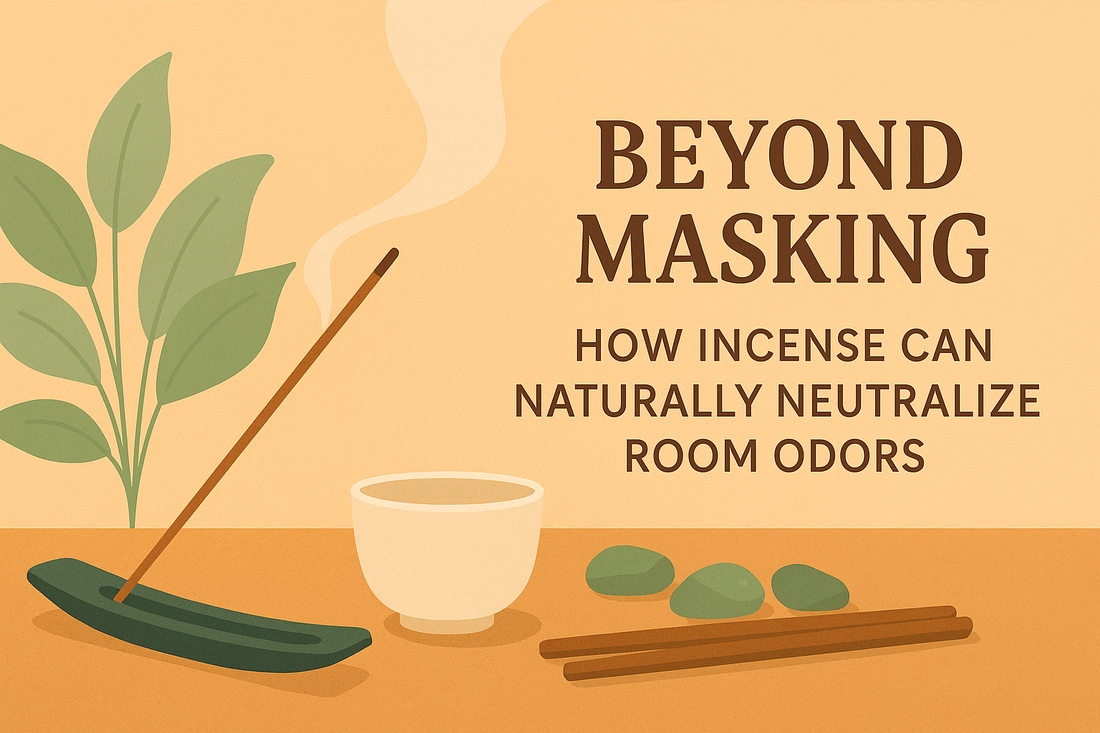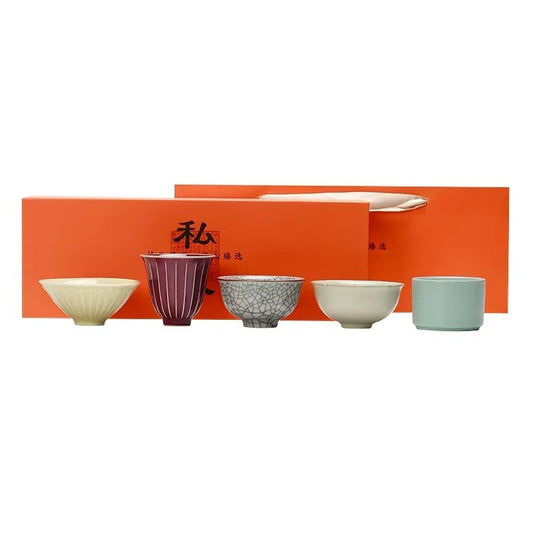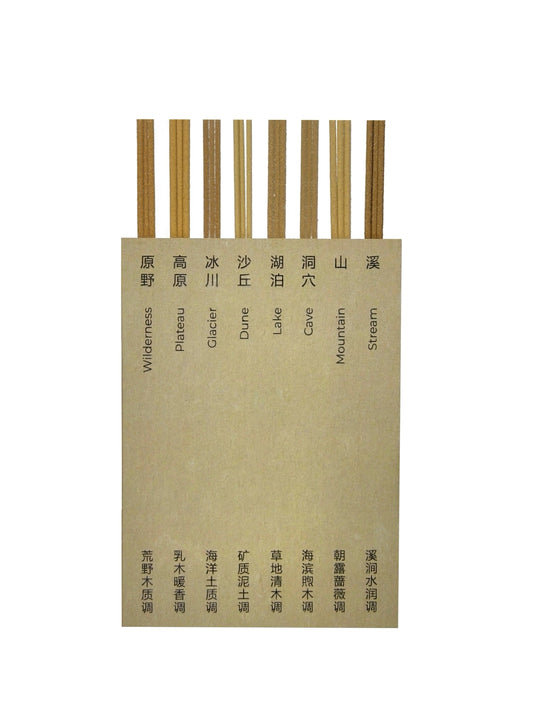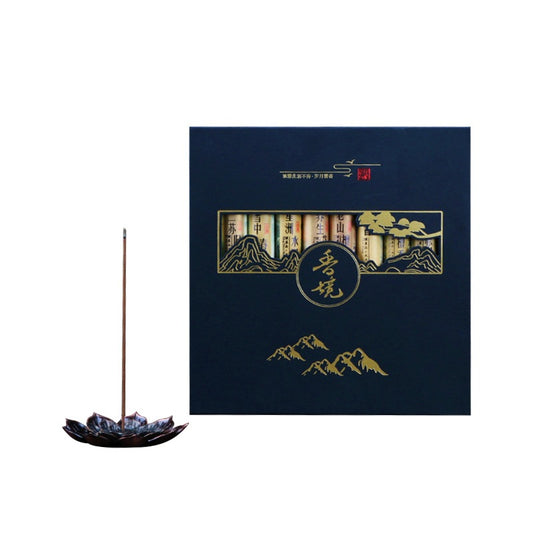
Beyond Masking: How Incense Can Naturally Neutralize Room Odors
Ever walked into a room and been hit by an unpleasant smell? Maybe it’s lingering cooking odors, stale air, or even the ghost of a previous tenant’s habits. We’ve all been there. And while air fresheners offer a quick, often chemical-laden fix, what if there was a more ancient, natural, and even mindful way to refresh your space? Enter incense. But we’re not just talking about masking odors; we’re diving into how incense, when used correctly, can actually help neutralize those stubborn smells, leaving your home feeling fresh and serene. This isn't just about making things smell good; it's about creating an atmosphere that truly feels clean and inviting, whether you're in a bustling city apartment or a quiet countryside retreat.
Let's be honest, nobody wants their home to smell like last night's dinner or a forgotten gym bag. And while a quick spray might temporarily hide the problem, it doesn't solve it. The real magic happens when you understand *why* odors linger and *how* incense interacts with them. We're going to explore the science behind smoke odors, the unique properties of incense smoke, and practical techniques to transform your living space. So, if you're ready to elevate your home's aroma game beyond simple cover-ups, stick around. We're about to unlock the secrets of incense smoke odor removal.
The Lingering Ghost: Understanding Room Odors smoke odor formation and composition
Before we can banish unwanted smells, it's crucial to understand what causes them to linger. Room odors, especially those from smoke (like tobacco or burnt food), aren't just fleeting scents; they're composed of microscopic particles and volatile organic compounds (VOCs) that attach themselves to surfaces, fabrics, and even circulate through your HVAC system. These compounds are often complex mixtures of chemicals, each contributing to the overall unpleasant aroma [1].
Think of it like this: when you burn something, tiny particles and gases are released into the air. These particles are incredibly small and can settle on almost anything – your curtains, furniture, walls, and even your hair. Over time, these accumulated particles release their odor, creating that persistent, stale smell. Simply opening a window helps, but it often doesn't fully eliminate the embedded odor. That's where the strategic use of incense comes in.
The Aromatic Alchemist: How Incense Tackles Odors incense odor neutralization mechanism
Now, here's where it gets interesting. Incense doesn't just overpower bad smells with a stronger, more pleasant one. While masking is certainly part of its immediate effect, certain properties of incense smoke can actually contribute to odor neutralization. This is a more nuanced process than simply spraying a synthetic air freshener.
Molecular Interaction: The Scent Dance
Many natural incense ingredients, such as resins (frankincense, myrrh), woods (sandalwood, agarwood), and herbs, release complex aromatic compounds when burned. These compounds are not just pleasant-smelling; some can chemically react with or bind to the odor-causing molecules in the air. This process, known as molecular encapsulation or chemical neutralization, effectively changes the structure of the odor molecule, rendering it odorless or significantly reducing its perceived intensity [2]. It's like the incense molecules are tiny, aromatic ninjas, disarming the bad smell molecules.
Particulate Absorption: A Microscopic Cleanup Crew
Incense smoke itself consists of fine particulate matter. While we often think of smoke as something to avoid, in this context, these particles can play a role in odor removal. As incense smoke disperses, its particles can physically adsorb (attract and hold on their surface) airborne odor molecules. Think of the incense particles acting like miniature sponges, soaking up the unwanted smells. As the incense smoke dissipates or is ventilated, it takes these adsorbed odor molecules with it, effectively removing them from the air [3]. This is particularly effective for gaseous odor compounds.
Ionization (Subtle Effect): Clearing the Air
Some research suggests that burning certain natural materials can release negative ions into the air. Negative ions are known to attach to airborne pollutants, including odor-causing particles, making them heavier and causing them to fall out of the air. While the effect from incense might be subtle compared to dedicated ionizers, it contributes to a cleaner-feeling atmosphere. This isn't a primary mechanism for odor removal, but it's an interesting ancillary benefit that adds to the overall freshness.
Strategic Incense Use: Beyond Just Lighting a Stick best practices for incense odor removal
To truly leverage incense for odor removal, you need a strategy. It's not just about lighting a stick and hoping for the best. It's about choosing the right incense, using it effectively, and understanding your space.
1. Choose the Right Incense: Not All Scents Are Created Equal
While any incense will mask an odor to some extent, some are particularly effective at neutralization. Look for incenses with strong, clean, or earthy notes that are known for their purifying properties. Traditional choices include:
- Sandalwood: Known for its calming and grounding properties, sandalwood also has a clean, woody aroma that can effectively cut through stale smells.
- Frankincense: This ancient resin has a deep, resinous, and slightly citrusy scent that is often used for purification and clearing. Its complex aroma can stand up to strong odors.
- Agarwood (Oud): A highly prized and complex scent, agarwood is excellent for creating a rich, luxurious atmosphere and can effectively neutralize a wide range of odors.
- Sage (White Sage): Often used in smudging rituals for cleansing and purification, white sage incense has a strong, herbaceous scent that is very effective against stale and smoky odors.
- Charcoal-based Incense: These often produce a cleaner burn and a more consistent fragrance, which can be beneficial for odor removal. Avoid incenses with excessive synthetic fragrances, as these might just add another layer of artificial smell.
Some brands even offer specific "odor eliminator" incenses, often infused with ingredients like charcoal or specific essential oils known for their neutralizing properties. Experiment to find what works best for your specific odor challenge and personal preference.
2. Ventilation is Key (But Not Too Much!)
This might sound counterintuitive after our fire alarm discussion, but proper ventilation is crucial for odor removal. You want to create a gentle airflow that helps disperse the incense smoke and the neutralized odor molecules out of the room. However, avoid strong drafts that will make the incense burn too quickly or scatter ash.
- Before Burning: Open a window slightly or turn on a ceiling fan on a low setting a few minutes before lighting your incense. This creates a subtle air current.
- During Burning: Maintain a gentle airflow. The goal is to circulate the air, not to blast the smoke out immediately. Let the incense smoke mingle with the air and interact with the odor molecules.
- After Burning: Once the incense has finished, you can increase ventilation to fully clear the air and remove any remaining particles. This ensures the room is left with a fresh, clean scent.
3. Strategic Placement: Where to Light Up
The placement of your incense burner matters. Consider the source of the odor and the natural airflow of your room.
- Near the Odor Source: If the odor is localized (e.g., from a trash can or a pet area), place the incense burner relatively close to the source to allow the incense smoke to directly interact with the odor molecules.
- Central Location: For general room freshness, place the incense burner in a central location where the smoke can easily disperse throughout the room. Avoid placing it directly under air vents or near open windows where the smoke will be immediately drawn out.
- Consider Multiple Points: For larger rooms or persistent odors, you might consider burning small amounts of incense in multiple locations, ensuring wider coverage.
4. Consistency and Patience: A Gradual Transformation
Odor removal, especially for deeply embedded smells, is often a gradual process. Don't expect a single stick of incense to magically eliminate years of accumulated odors. Regular, consistent use of incense can gradually reduce and neutralize persistent smells. Think of it as a continuous purification process for your home's atmosphere.
5. Cleanliness First: Incense is a Supplement, Not a Substitute
It's important to remember that incense is a tool for odor neutralization and atmospheric enhancement, not a substitute for good hygiene. Before attempting to remove odors with incense, ensure the source of the odor has been cleaned or removed. For example, if your trash can smells, empty and clean it first. If pet odors are an issue, clean pet bedding and vacuum regularly. Incense works best in a generally clean environment, helping to tackle residual or airborne odors.
Beyond the Smoke: The Holistic Benefits incense for home atmosphere
Using incense for odor removal isn't just about a fresh-smelling home; it's about cultivating a more mindful and pleasant living environment. The act of lighting incense, observing its smoke, and enjoying its fragrance can be a ritual in itself, promoting relaxation, focus, and a sense of calm. Many find that the subtle, natural aromas of incense are far more appealing and less intrusive than artificial air fresheners.
Common Questions: Your Incense Odor Removal Queries Answered (FAQ)
Can incense completely eliminate strong odors like cigarette smoke?
While incense can significantly reduce and neutralize strong odors like cigarette smoke, complete elimination often requires a multi-pronged approach, including thorough cleaning of surfaces, fabrics, and ventilation systems. Incense is highly effective at tackling airborne and residual odors, but it works best in conjunction with regular cleaning.
Is it safe to burn incense daily for odor removal?
When burned in a well-ventilated area and with natural, high-quality ingredients, burning incense daily for odor removal is generally considered safe for most individuals. However, individuals with respiratory sensitivities (e.g., asthma) should exercise caution and ensure adequate ventilation. Always choose incense made from natural ingredients and avoid those with synthetic fragrances or harsh chemicals.
What's the difference between masking and neutralizing odors?
Masking odors means covering an unpleasant smell with a stronger, more pleasant one, without actually removing the original odor molecules. Neutralizing odors, on the other hand, involves a chemical or physical process that alters or removes the odor molecules, making them undetectable. While incense can do both, its ability to neutralize through molecular interaction and particulate absorption goes beyond simple masking.
Discover Our Incense Collection
Explore our handcrafted incense and burners designed for mindful living, ensuring a serene atmosphere and naturally fresh spaces.
Explore IncenseReferences
[1] CIRES, "After the fire: Frequently asked questions." [Online]. Available: https://cires.colorado.edu/news/after-fire-frequently-asked-questions
[2] Alpha Aromatics, "Why Is Metazene The Most Effective Odor Control Chemical?" [Online]. Available: https://www.alphaaromatics.com/blog/why-is-metazene-the-most-effective-molecular-odor-control-chemical/
[3] Sanuvox, "Odor Remediation of Environmental Tobacco Smoke." [Online]. Available: https://sanuvox.com/en/blog/odor-remediation-of-environmental-tobacco-smoke/












